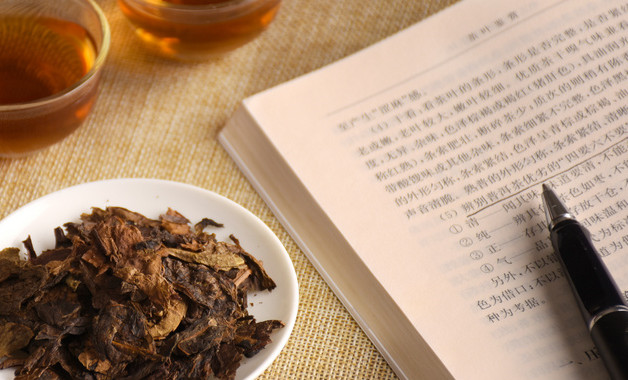
第1篇 小学英语语法知识点总结:be动词的用法
be 动词的用法:
(1) am--was is --was are--were 口诀:我用am, 你用are, is用在他她它,复数全用are。
(2) 肯定和否定句 i am (not) from london. he is(not) a teacher. she is(not) in the dining room. my hair is(not) long. her eyes are(not) small.
(3) 一般疑问句 am i a chinese? yes, you are. no, you aren’t. are they american? yes, they are. no, they aren’t. is the cat fat? yes, it is. no, it isn’t.
there be 结构
肯定句: there is a …
there are …
一般疑问句:is there …? yes, there is./ no, there isn’t.
are there…? yes, there are. /no, there aren’t.
否定句: there isn’t …. there aren’t….

第2篇 小学四年级下册英语语法知识点总结
一般过去时
1.一般过去时表示过去某个时间发生的动作或存在的状态,常和表示过去的时间状语连用。一般过去时也表示过去经常或反复发生的动作感谢。
2.be动词在一般过去时中的变化:
⑴am和is在一般过去时中变为was(was not=wasn’t)
⑵are在一般过去时中变为were(were not=weren’t)
⑶带有was或were的句子,其否定、疑问的变化和is, am, are一样,即否定句在was或were后加not,一般疑问句把was或were调到句首。
3.句中没有be动词的一般过去时的句子
否定句:didn’t +动词原形,如:jim didn’t go home yesterday.
一般疑问句:在句首加did,句子中的动词过去式变回原形。
如:did jim go home yesterday?
特殊疑问句:
⑴疑问词+did+主语+动词原形?
如:what did jim do yesterday?
⑵疑问词当主语时:疑问词+动词过去式?
如:who went to home yesterday?

第3篇 小学英语语法知识点总结:数词
表示数目多少或顺序多少的词叫数词,数词分为基数词和序数词。表示数目多少的数词叫基数词;表示顺序的数词叫序数词。
一、基数词
1)基数词写法和读法: 325 three hundred and twenty-five;
2)基数词一般是单数形式,但下列情况,常用复数:
a. 与of 短语连用,表示概数,不能与具体数目连 用,如scores of people 指许多人;
b. 在一些表示“一排”或“一组”的词组里;
如:they arrived in twos and threes. 他们三三两两的到达了。
c. 表示“几十岁”;
d. 表示“年代”,用 in +the +数词复数;
e. 在乘法运算的一种表示法里,如:3 x 5 = 15 three fives is (are) fifteen.
二、序数词
序数词的缩写形式: first—1st second—2nd thirty-first—31st
三、 数词的用法
1)倍数表示法
a. 主语+谓语+倍数(或分数)+ as + adj. + as
i have three times as many as you. 我有你三倍那么多。
b. 主语+谓语+倍数(分数)+ the size (amount,length…) of…
the earth is 49 times the size of the moon. 地球是月球的49倍。
c. 主语+谓语+倍数(分数)+ 形容词(副词)比较级+ than…
the grain output is 8 percent higher this year than that of last year.
今年比去年粮食产量增加8%。
d. 还可以用by+倍数,表示增加多少倍
the production of grain has been increased by four times this year.
今年粮食产量增加了4倍。
2)分数表示法
构成:基数词代表分子,序数词代表分母。分子大于1时,分子的序数词用单数,分母序数词用复数:
1/3 one-third ; 3/37 three thirty-sevenths.

第4篇 小学英语语法知识点总结:情态动词
我们现在学过的情态动词有:can, could, will, would, may, must, should, shall。
情态动词后动词总是用原形。(不受其他任何条件影响)
特征
1)情态动词(modal verb)本身有词义,表示说话人的语气或情态,但词义不完全,不能单独用作谓语动词,一般只能和动词原形一起构成谓语动词。
2)情态动词所表示的情态有:命令、允诺、请求、拒绝、愿望、愿意、义务、必要、可能、能力、敢于、需要等。
3)情态动词(ought除外)和助动词shall,will,should,would一样,后面的动词不定式一般皆不带。
形式变化
1)没有人称和数的变化,第三人称单数的现在时也无变化。如:
i can we can
you can you can
he
they can
she can
it
2)有些情态动词有过去式,有少数过去式和它的原形相同。
a)有过去式的情态动词有:
may -- would
can ―― could
may―― night
shall -- should
have to -- had to
b)过去式不变的情态动词有:
must - must (或had to)
ought to - ought to
need---need
dare - dare(亦可用dared)
3)大多数情态动词后面可用动词的进行式、完成式和被动形式,如:can(may,must)be doing,can(may,must) have done,can(may,must)be done等。
否定式
情态动词和助动词一样,后面可直接跟否定词not。现将情态动词的否定式及其否定式的简略式(简略式用于口语中)列举如下:
shall not--shan‘t [fb:nt]
will not---won’t [weunt]
can not-can‘t [kb:nt]
must not-mustn’t [5mqsnt]
should not-- shouldn‘t
would not-- wouldn’t
could not-- couldn‘t
dare not- daren’t [dzent]
need not-- needn‘t
在疑问句中的用法
情态动词在疑问句中的用法和助动词相同。如:
may i ask you a question? 我可以问你一个问题吗?
can you let me use your dictionary for a minute? 你能把字典借我用一会儿吗?
would you like to visit the heavy machinery plant? 你想参观重型机器厂吗?
注意have to在疑问句中的位置。如:
do you have to go out today? 你今天一定得出去吗?
does he have to finish the work tomorrow? 他明天非做完这项工作不可吗?

第5篇 小学四年级英语语法知识点总结
情态动词can
can 在英语中有一个特殊的名字,叫做情态动词,表示“能够”, “会”, “能力”后面要跟着表示动作的动词。没有时态和人称的变化。表示不能做什么的时候,后面加上 not为can not,或者缩写为can’t。问别人“能…吗?”要把can 放在句子前面,首字母要大写,句尾别忘加上问号。
人称代词所属格
注意:主格作主语,其中she指带代国家,it可指代天气时间等。
宾格作宾语,介词宾语,表语。动词后面用人称宾格
形容词性物主代词作定语。
名词性物主代词作主语,宾语,介词宾语,表语书信yours…
表示 ---- 的,这样的词我们也学习很多了,你能想出来吗?
记住这个小口诀就很容易了:我的 my ,你的your,他的 his、她的her. //它的是its; 我们的 our; 你们的是 your他们(它们,她们)的是their//这些人称代词形式称为人称代词所属格,也叫形容词性物主代词。通常用在名词前面表示所属关系。另外,表示某人的还可以用名词或人名+ ’s 来表示。如:
my kite;your book;his pen;her coat;its tail;our class;
their teachers;my brother’s;book;the cat’s ears;mary’s mother












